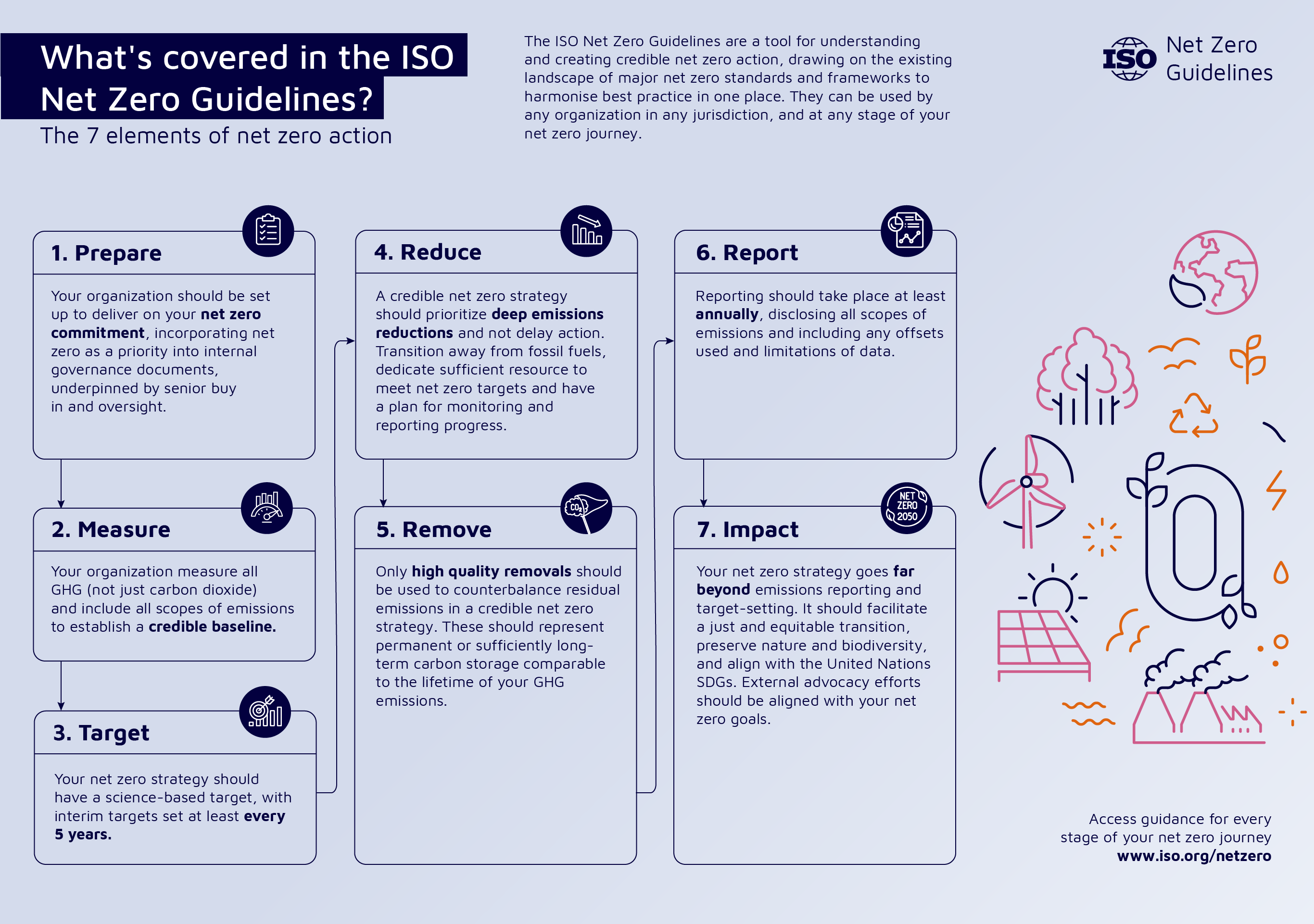After a consensus-based process that included over 100 countries and 1,200 organisations, the International Organisation for Standardization (ISO) launched the Net Zero Guidelines at COP27 (November 2022). These Guidelines are now a core reference text for credible net zero action, aiming to provide clarity on what a best practice climate action plan looks like for any organisation type: corporates, local authorities, policy makers and others.
Rather than introducing another new standard or reporting framework, the Guidelines draw on the existing landscape of net zero standards and initiatives to synthesise best practice guidance in one place. The Guidelines work by signposting relevant standards and frameworks (e.g. SBTi, ISSB and others) for different stages of an organisation’s transition towards net zero. This includes guidance on preparing internal governance, setting net zero targets, and reporting emissions reductions and signposting progress against relevant standards and frameworks. The Guidelines are intended to be accessible for any organisation in any jurisdiction, at any point of their net zero journey: from developing a new net zero plan, to updating a pre-existing one to bring it in line with the latest best practice.
Over the coming years, the international standards system will develop a formal net zero standard that builds upon the Net Zero Guidelines, supporting an internationally harmonised regulatory approach to net zero transition.




